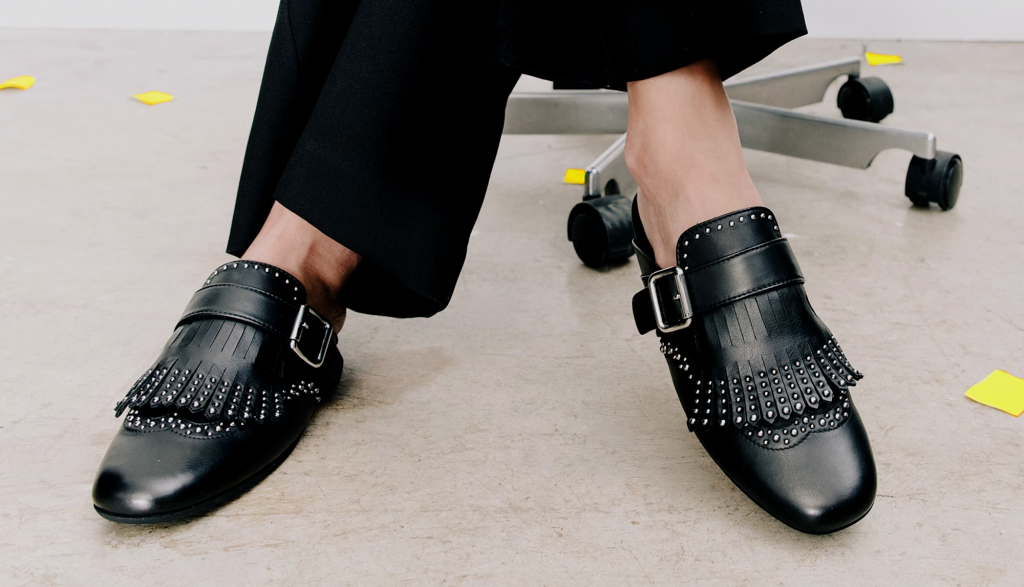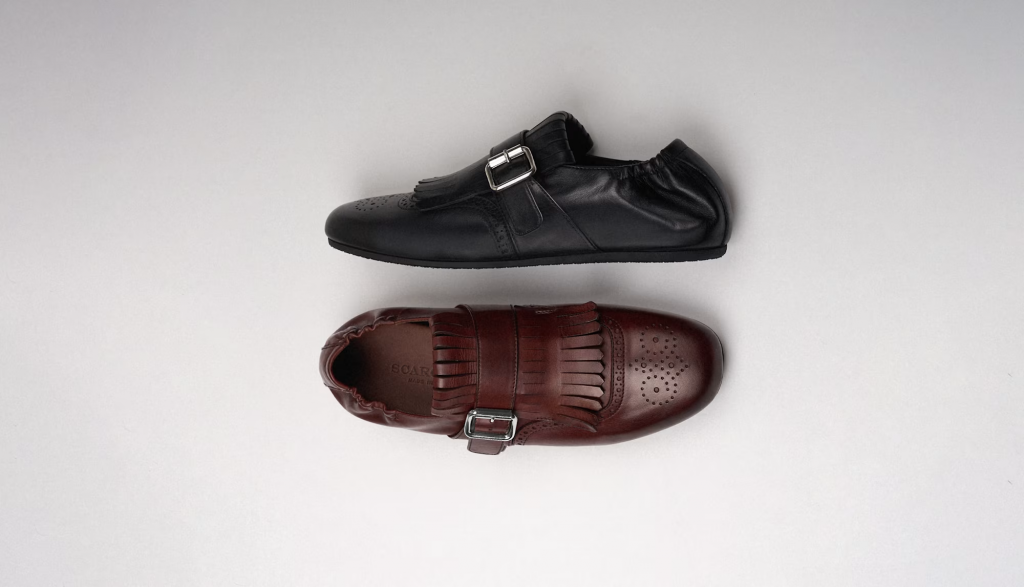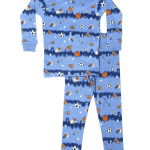Introduction: Why Scarosso matters
If you care about shoes that look sharper than their price tag suggests, Scarosso is a name you’ve probably seen. But is it marketing polish or real shoemaking craft? In this 360° guide I’ll walk you through Scarosso’s origins, manufacturing claims, construction methods, fit and value — and give you clear, actionable advice so you can decide whether to click “buy.” Think of this as a compass: we’ll point at the facts, weigh strengths and weaknesses, and leave you with a checklist to shop intelligently.

Brand Snapshot
Founding & Headquarters
Scarosso launched in the 2010s and positions itself as an Italian shoemaker based in Milan, with production rooted in Italy’s footwear regions. The brand presents itself as a maker of handcrafted Italian shoes backed by modern direct-to-consumer retail practices. PitchBook+1
Business Model: Direct-to-Consumer & Pricing
A core part of Scarosso’s story is cutting out middlemen: selling through its own website and a select set of stores to keep prices accessible while claiming Italian manufacturing. That DTC model—combined with limited retail overhead—helps explain the brand’s “attainable luxury” positioning. Forbes and other outlets have noted this strategy as part of Scarosso’s growth story. 福布斯+1
Design Philosophy
Scarosso mixes classic Italian silhouettes with contemporary tweaks: streamlined lasts, rich patinas, and a palette that moves from conservative dress tones to seasonal experiments. The aim is pragmatic elegance — shoes that work for modern office life and weekend smart casual.
Product Range: What they sell
Men’s Offerings
Expect a full men’s wardrobe: oxfords and derbies for formal wear, loafers and monk-straps for business casual, and suede or espadrille styles for summer. Many lines lean toward versatility — dress shoes that can be dressed down with chinos.
Women’s Offerings
Women’s lines mirror the same DNA: pumps, loafers, block-heeled sandals and tailored flats. The silhouettes are both feminine and wearable, designed to balance trend and timelessness.
Seasonal & Limited Editions
Scarosso periodically launches seasonal colourways and collaborations and promotes services like customized patina finishes. These drops usually showcase craftsmanship and can be a way to buy something distinctive without a huge premium. Town & Country
Craftsmanship & Materials
Made-in-Italy claims & production regions
Scarosso publicly emphasizes Italian production, often referencing family-run manufactories in the Marche — Italy’s historic shoe region — as its producers. That regional anchoring is a meaningful signal: Marche has skilled ateliers and a shoemaking ecosystem that supports higher-quality finishing. us.levelshoes.com+1
Construction methods (Blake, Blake-Rapid, Goodyear)
Quality shoe construction matters. Scarosso documents and promotes the use of several construction types, including Blake and Blake-Rapid techniques — the Blake-Rapid method hybridizes Blake stitching with a midsole for improved durability. The Blake family of constructions is common in Italian-style footwear because it yields a sleeker profile and lighter weight than traditional Goodyear welts. scarosso.com+1
Leather, linings & soles
Scarosso uses finished leathers typical of Italian shoemaking: full-grain calf leathers, suede variants and leather linings. Soles range from leather dress soles to rubber or mixed soles for more casual or weather-resistant models. Quality of hides and tanning is a big factor in long-term appearance and patina potential.

Fit, Lasts & Comfort
Choosing the right size
Italian lasts can run narrow or true-to-size depending on the model. My practical advice: consult size guides, read model-specific reviews, and — if you’re between sizes — consider the intended use. For narrow dress lasts, size up if you have a wider forefoot; for rounded casual lasts, your standard EU/US conversion often works.
Breaking-in and long-term comfort
Blake-constructed shoes generally break in faster than heavily welted English shoes because the sole and upper are less rigid. Expect a short adaptation period. Use cedar shoe trees, rotate shoes, and let leather rest after prolonged wear to preserve fit and avoid creasing.
Value Proposition & Market Comparison
Price vs quality: The math
Scarosso sits in a “post-luxury” band: higher quality and more craft than fast fashion shoes, but priced below heritage Goodyear-welted makers. The DTC model narrows retail margins, allowing the brand to offer Italian-made claims at more accessible price points. That’s attractive — but value depends on how much you prioritize resoleability, materials, and brand provenance.
Competitors & alternatives
Comparable options include other DTC Italian brands and mid-market handmade labels. If you want heavier English construction or bespoke lasts, look elsewhere; if you want stylish, lighter Italian lines with decent materials, Scarosso competes well. Publications like The Rake and Town & Country have recognized Scarosso’s niche as an attainable Italian shoemaker. therake.com+1
Sustainability & Transparency
Supply chain transparency
Scarosso highlights Made-in-Italy production and often references family workshops; however, modern brands vary in how deeply they publish traceability. If sustainability matters to you, ask for specifics: tannery certifications, traceable leather origins, and worker welfare disclosures.
Longevity & repairability
Because many Scarosso models use Blake or Blake-Rapid construction, resoling is possible but different from Goodyear welt resole options. A skilled cobbler can extend life, but Blake repairs require different techniques. Still, proper care dramatically extends usable life, making the shoes a better environmental choice than cheap disposable footwear.
Buying Guide: How to buy smart
Online vs store: pros and cons
Buying online: wider size selection, discounts, but relies on returns. In-store: try the last, feel leather, check construction. Scarosso operates online sales and select boutiques; choose stores with good return policies if you’re uncertain about fit.
What to inspect when they arrive
Quick checklist:
- Leather finish and uniformity.
- Stitching neatness and absence of glue marks.
- Sole join quality (no gaps, even cement lines).
- Fit: heel hold and toe room.
If something looks off, use the return window — DTC brands tend to be responsive if you document issues.
Style & Outfit Pairings
Formal outfits
Pair Scarosso oxfords or cap-toes with navy or charcoal suits. Their sleeker Italian last complements slim-to-modern cuts; avoid overly chunky soles if you want a formal silhouette.
Smart-casual & weekend looks
Loafers, monk-straps and suede derbies shine with chinos, denim and lightweight blazers. Think of Scarosso shoes as translators: they make casual outfits read smarter without feeling stiff.
Care, Maintenance & Repairs
Daily care routine
Brush after each wear, use a neutral or matching cream polish periodically, and condition sparingly (once every few months). Shoe trees are non-negotiable — they absorb moisture and preserve shape.
When to resole or reheel
Watch for sole thinning, uneven wear, and sole separation around the toe. For Blake constructions, repairs are simpler and often cheaper than full Goodyear resoles, but consult a trusted cobbler experienced with Italian methods.
Pros & Cons — A Balanced Verdict
Strengths
- Attractive price-to-quality ratio for Italian-styled shoes. 福布斯
- Made-in-Italy manufacturing claims and skilled finishing. scarosso.com+1
- Sleek lasts and modern designs suited to contemporary wardrobes.
Weaknesses
- If you prioritize Goodyear welt resoleability or very heavy-duty longevity, some Scarosso models may not match English-style construction.
- Transparency on full supply-chain metrics varies across DTC brands — ask for details if this matters.
Conclusion
Scarosso is a pragmatic choice for shoppers who want Italian styling, decent materials, and modern design without paying full heritage couture prices. Their direct-to-consumer model unlocks value; Italian production claims and use of Blake/Blake-Rapid constructions give the shoes a lighter, sleeker feel that breaks in nicely. If you want long-term, repair-friendly, heavy English welted construction, Scarosso may not be the perfect fit—but if your priority is style, comfort, and approachable craftsmanship, they’re certainly worth a close look.
FAQs
Q1: Are Scarosso shoes truly made in Italy?
A: Scarosso markets its shoes as made in Italy, often produced in the Marche region and with ties to Italian workshops. For model-specific origin details, check the product page or contact customer service. scarosso.com+1
Q2: What construction is best — Blake or Goodyear?
A: There’s no universal “best.” Blake and Blake-Rapid yield sleeker, lighter shoes that break in faster; Goodyear welted shoes are more robust and easier to resole repeatedly. Choose based on your priorities: slim profile and immediate comfort (Blake) vs ultimate resolability and heavy duty use (Goodyear). scarosso.com+1
Q3: How should I size Scarosso shoes?
A: Start with the brand’s size chart and read model-specific reviews. If between sizes and the model is narrow, consider sizing up. If possible, try in a store or order two sizes and return the one that doesn’t fit.
Q4: Is Scarosso good value for the price?
A: Many reviewers and fashion editors have praised Scarosso’s value proposition: solid materials, Italian finishing, and direct pricing that undercuts some heritage brands while offering comparable aesthetics. Your own mileage depends on use patterns and how much you value resolability. 福布斯+1
Q5: How do I maintain Scarosso leather to keep it looking new?
A: Regular brushing, occasional cream polish, periodic conditioning, and using cedar shoe trees after wear will keep leather healthy. Address scuffs promptly and store shoes dry and ventilated.









